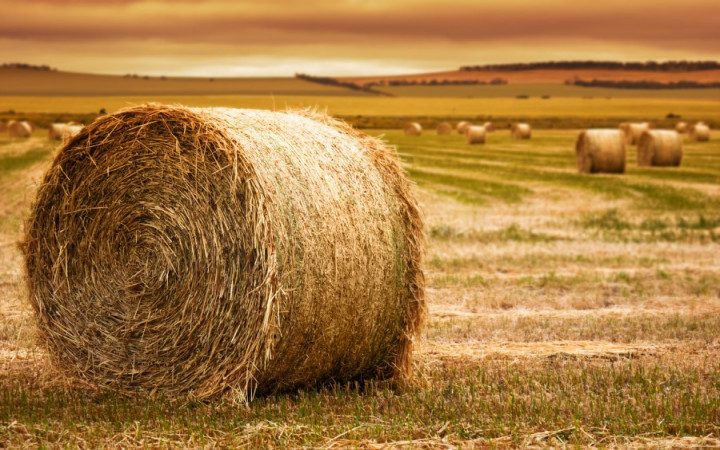Lately in Wonderopolis, the horses have been looking a bit worried. When we asked them why, they said they're scared of getting hay fever!
Okay, so maybe that's not the best joke you've ever heard, but today we're WONDERing all about hay, the grasses that are used to feed a variety of animals. Are there farms where you live? Have you ever traveled through the countryside and observed hay bales strewn about in fields? You may have noticed that not all bales of hay are shaped the same. Some are small square or rectangular bales, while others are huge round bales. Why is that?
Farmers who grow hay can bale it in a variety of shapes and sizes, depending upon the particular baling equipment they purchase. Most older balers produced square or rectangular bales of varying sizes. Most smaller square or rectangular bales of hay weigh between 40-50 pounds each.
In the last 40 years or so, balers that produce very large round bales have become much more common. These "ton bales," as they are often known, can weigh anywhere from 800 to over 1,500 pounds. To make things even more complicated, balers have also been invented that can bale large "ton bales" in a square or rectangular shape.
So how do farmers choose which kind of baling equipment to buy and thus what type of bales of hay to produce? Like many agricultural business issues, a variety of economic factors go into making such an important decision.
For example, baling small square or rectangular bales of hay can be quite labor intensive. It can take longer to produce the smaller bales, because the hay has to be dried for longer periods of time between being cut and baled. It also takes more workers to pick up, stack, transport, and store the bales.
Large round bales, on the other hand, require less time between cutting and baling, since they tend to be packed more densely and are more moisture-resistant due to their shape. They are also more economic, since they require less manpower to produce. Large round bales can often be transported and stored by one person using a tractor.
Another important factor is the number and type of animals being fed. Large farms with hundreds of animals require huge amounts of hay. For these farms, large bales make the most sense, because they provide the most hay at the least cost. Large bales also allow the hay to begin to ferment naturally, which can prolong its use by preventing rot and mold.
For smaller farms with just a few animals, small square or rectangular bales may make the most sense. Smaller bales are easier to store. A smaller farm simply might not have enough space to store large round bales. Smaller bales, while more expensive to produce or buy, result in less waste than larger bales.
So when you see different types of bales of hay in fields, remember that many factors have played a role in determining the type and size of bales to produce. Some farmers make their decisions based upon their own animals they need to feed, while others may make their choices based upon the clients they serve.




